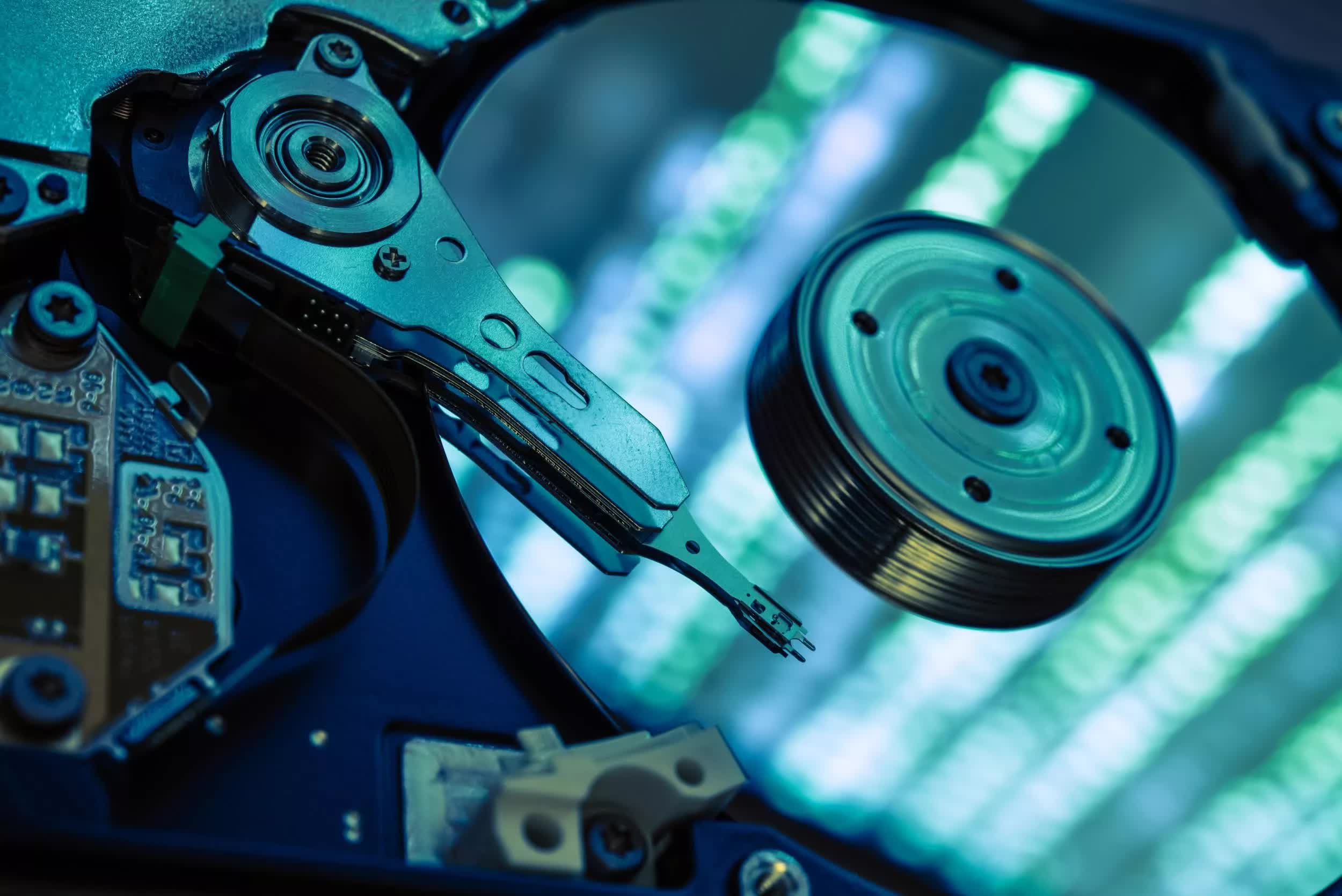Serving tech enthusiasts for over 25 years.
TechSpot means tech analysis and advice you can trust.
Forward-looking: Going from today's 30TB to 60TB in just four years would be a heck of an increase after HDD capacity growth stalled for a while. However, that's exactly what the new International Roadmap for Devices and Systems Mass Data Storage report by IEEE is predicting. The roadmap calls for 60TB hard disk drives to hit the market in 2028.
The increase will be brought about by some advanced new recording innovations, including energy-assisted magnetic recording (EAMR) technologies such as HAMR: Heat Assisted Magnetic Recording, which was pioneered by Seagate, is expected to be a game-changer in supercharging areal densities on spinning disk platters.
Speaking of areal density, that key spec will have to more than double from around 2TB per square inch in 2025 to over 4TB per square inch in 2028 to facilitate 60TB HDDs, the experts say. By 2037, they're projecting over 10TB per square inch, which could yield mind-boggling 100TB hard drives if the other pieces fall into place. However, Seagate previously predicted they'd be able to hit those numbers as early as 2030.
Achieving these densities won't be easy, though. The roadmap states that "critical advances are required" in materials for both the disk media and the read/write heads. This includes the likes of new magnetic and non-magnetic films, sub-1nm thin dielectric coatings for the heads, and improved disk overcoats. The report also sees traditional 7200RPM speeds sticking around so improvements will have to be made in other areas.

Beyond capacities, one peculiar revelation in the roadmap is that global HDD unit sales could surge over the coming years, rather than continuing their decline (except for the slight recent uptick). The forecast predicts sales rising from 166 million in 2022 to 208 million in 2028 and a whopping 359 million annually by 2037.
Beyond HDDs, IEEE also has some interesting insights for the 3D NAND flash market. They note that the path to higher densities/lower costs will involve increasing the bits-per-cell (QLC to PLC), minimizing layer count growth, shrinking lithography, and maintaining high aspect ratio hole etching. But layer scaling will eventually hit a limit, perhaps around 1,000 layers based on current projections.
The report also mentions magnetic tape storage, noting that the market is expected to sustain its recent 30-40% annual capacity growth rate. However, advances in read heads, servo tech, error correction, and smoother media coatings will be required to achieve higher capacities.




:quality(85):upscale()/2024/10/29/625/n/1922564/ec222ac66720ea653c5af3.84880814_.jpg)
:quality(85):upscale()/2024/10/25/846/n/49351082/bfc0fdb3671bef086c3703.42134063_.jpg)

:quality(85):upscale()/2021/07/06/971/n/1922153/7d765d9b60e4d6de38e888.19462749_.png)
:quality(85):upscale()/2024/10/29/957/n/1922441/c62aba6367215ab0493352.74567072_.jpg)
 English (US) ·
English (US) ·